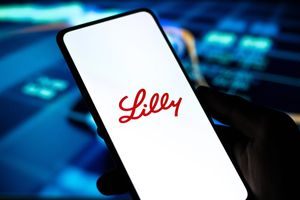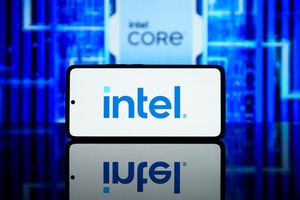
Renowned investor Steve Eisman, famous for his prescient bet against the subprime mortgage market, is once again making waves with his unconventional take on current Federal Reserve monetary policy. Eisman contends that recent and anticipated Fed rate cuts are largely insignificant, amounting to little more than "tinkering" with an economy he firmly believes is fundamentally robust and healthy. His perspective challenges the widely held notion that every basis point movement by the central bank holds profound implications for market stability and economic growth.
In a financial landscape often obsessed with the Federal Reserve's every utterance and decision, Eisman's dismissive stance offers a refreshing counter-narrative. He argues that despite the market's intense focus, these minor adjustments to the federal funds rate will not meaningfully alter the current economic trajectory, which he views as surprisingly resilient. This viewpoint suggests that investors and the public alike may be overestimating the power of the Fed's short-term maneuvers and underestimating the underlying strength of the U.S. economy.
Steve Eisman: "The Economy is Fine," Fed Cuts are Not a Game-Changer
Steve Eisman has been vocal throughout 2024, consistently asserting that the U.S. economy is in far better shape than many believe, rendering the Federal Reserve's recent and potential rate cuts largely irrelevant to the broader economic picture. His comments have resonated across financial media, including interviews on Bloomberg Television and CNBC's "Squawk Box" and "Bloomberg Surveillance Podcast," where he has articulated a clear and consistent message: the economy is "fine," and modest rate adjustments are simply "tinkering at the edges."
Specifically, in May 2024, Eisman stated on Bloomberg Television that there isn't an "aggressive rate cycle coming of cutting," and that if the Fed cuts "once or twice to tinker at the edges," it wouldn't genuinely matter. He reiterated this sentiment in September 2024, following a 50 basis point cut by the Federal Reserve, noting the market's initial confusion as stocks rose despite higher interest rates, underscoring his belief that actual economic health is paramount. He highlighted key economic indicators such as approximately 3% economic growth, 4.2% unemployment, and inflation stabilizing around 2.5%, asserting that the economy has merely shifted "from really strong to just strong." Eisman, a senior portfolio manager at Neuberger Berman (NYSE: NBL), maintains that the current economic strength provides little justification for aggressive rate reductions, and that such cuts might even risk making the market "bubbleicious." He advocates for investors to look beyond the Fed's pronouncements, which he likens to "Moses coming down from Sinai with the tablets," and instead focus on fundamental economic performance.
His stance is particularly significant as it comes amidst a period of considerable debate over the Fed's path forward. While many economists and market analysts scrutinize every data point for clues about future rate movements, Eisman cuts through the noise, suggesting that the focus on the Fed's actions is often overblown. He sees the market's preoccupation with minute changes in monetary policy as a distraction from the underlying health of corporations and consumers. For Eisman, the economy is robust enough to handle current interest rate levels, and any minor adjustments from the central bank are unlikely to fundamentally alter its trajectory. This perspective encourages a more grounded assessment of economic conditions, shifting attention from speculative Fed-watching to core economic indicators.
Who Wins and Who Loses When the Fed Just "Tinkers"?
In a fundamentally benign economy, as described by Steve Eisman, where Federal Reserve rate cuts are merely "tinkering" rather than a significant economic catalyst, the landscape for corporate performance shifts. Companies with robust fundamentals, exposure to long-term growth trends, and less reliance on aggressive monetary stimulus are poised to thrive, while those with weak balance sheets or sector-specific headwinds may struggle, irrespective of minor rate adjustments.
Eisman's thesis suggests that the true "winners" will be found in sectors driven by genuine innovation and structural demand. He specifically champions Technology companies, especially those involved in Artificial Intelligence (AI) and infrastructure-related developments. Firms driving AI advancements, cloud computing services, cybersecurity, and the underlying data center and semiconductor infrastructure are expected to benefit from increased investment and productivity gains. Their growth will stem from fundamental business expansion and technological adoption, rather than artificially cheap financing. This includes companies like NVIDIA (NASDAQ: NVDA) for its AI chips or Microsoft (NASDAQ: MSFT) for its cloud AI offerings. Similarly, Industrials and Capital Goods manufacturers are well-positioned as a strong economy encourages businesses to invest in expansion and equipment, often bolstered by government infrastructure spending.
Conversely, the "losers" or those facing significant challenges in Eisman's scenario are often highly sensitive to financing costs or burdened by specific industry-level issues. While Eisman views traditional Banks as systemically safe and well-capitalized, he does not see a "great long-term story" in them as investment vehicles. Minor Fed rate cuts can actually hurt their net interest margins (NIMs)—the difference between what banks earn on loans and pay on deposits—even if a strong economy means fewer loan defaults. Highly leveraged companies or so-called "Zombie" companies, which rely on extremely low-interest rates to service their substantial debt, will also struggle if rate cuts are only minor and do not provide a significant reprieve in borrowing costs. Furthermore, Eisman has singled out sectors like Residential Solar, predicting a down year due to regulatory changes making installations less cost-effective, and industries heavily reliant on imports, facing "margin erosion" from tariffs. These examples underscore that in a fundamentally sound economy, specific industry dynamics and policy decisions can have a more profound impact than incremental Fed actions.
A Robust Economy: Implications for Industry and Policy
Steve Eisman's assertion that Federal Reserve rate cuts are mere "tinkering" within a fundamentally benign economy carries significant implications for broader industry trends, competitive landscapes, regulatory frameworks, and how we draw lessons from history. His perspective challenges the ingrained market habit of micro-analyzing every Fed announcement, redirecting focus towards underlying economic strengths, particularly in areas like artificial intelligence (AI) and infrastructure.
This view contrasts sharply with some prevailing industry anxieties, which often forecast slower growth and more aggressive rate cuts driven by moderating consumer spending. However, Eisman's optimism aligns with the robust performance seen in equity markets, especially in large-cap technology and communication services, partly fueled by the compelling AI narrative. He points to real AI investment and substantial infrastructure spending as key economic drivers, suggesting that the current market enthusiasm for companies like NVIDIA (NASDAQ: NVDA) reflects genuine "story-time" growth. If Eisman's benign view gains wider acceptance, investment strategies may pivot away from anticipatory Fed easing, instead prioritizing fundamental analysis, corporate earnings, and long-term thematic investments in technology and infrastructure. This could lead to a re-evaluation of systemic risks, with Eisman's confidence in the banking system's post-2008 capitalization potentially reducing anxieties about financial sector stability, despite some projections for credit quality normalization in consumer loans.
From a regulatory and policy standpoint, Eisman's perspective suggests that monetary policy's impact is less profound than the economy's inherent dynamism. If the economy continues to perform strongly despite minor Fed adjustments, it could bolster arguments for the Fed to remain data-dependent and cautious, rather than aggressively intervening. This might shift policy discussions towards long-term structural reforms that foster innovation, productivity, and infrastructure development—areas Eisman identifies as crucial. His confidence in the current banking system's safety also implicitly validates existing post-2008 regulatory frameworks, potentially strengthening arguments against significant deregulation. Furthermore, Eisman's dismissal of concerns regarding the U.S. budget deficit, citing "insatiable" demand for U.S. Treasuries, could reduce pressure for immediate fiscal austerity, potentially allowing for continued government spending in growth-driving sectors.
Historically, Eisman and others draw parallels to the "Goldilocks" era of the mid-1990s, characterized by sustained growth, technological innovation (the internet), and genuine productivity gains, rather than the speculative excesses of the late 1990s dot-com bubble. He explicitly differentiates the current environment, arguing that today's investments are backed by solid cash flow and established business models, unlike the "anything-goes" atmosphere of concept stocks in the dot-com era. A central pillar of Eisman's thesis is the "recession that never was"—the widely predicted downturn following the Fed's aggressive rate hikes in 2022-2023 that failed to materialize. This outcome, he suggests, points to an unprecedented resilience and dynamism in the U.S. economy, distinguishing the present from historical periods where aggressive tightening typically led to recessions. This historical context reinforces his view that underlying economic strength, rather than incremental Fed actions, is the dominant force.
What Comes Next: Navigating a "Benign" Future
If Steve Eisman's assessment of a fundamentally benign economy and a "tinkering" Federal Reserve holds true, the path ahead for businesses and investors will be characterized by a nuanced blend of steady growth, specific sectoral opportunities, and the need for disciplined, fundamentals-driven strategies. It suggests a future where economic dynamism is largely self-sustaining, less reliant on dramatic monetary interventions, yet still susceptible to market sentiment and external shocks.
In the short-term, we could expect to see a continuation of moderate economic growth, supported by robust employment and consumer activity, despite some acknowledged stress among lower-income demographics. Inflation is likely to remain stable or continue its gradual descent without a resurgence, as the Fed maintains a cautious, data-dependent stance. While the market might still react with short-term volatility to each Fed announcement, these reactions may lack lasting macro impact, leading to a potential "melt-up" dynamic in the stock market as investors chase returns in an environment free from a significant recession. Long-term possibilities point towards a prolonged period of economic expansion, potentially avoiding major boom-and-bust cycles. Interest rates might gradually normalize to a "new neutral" that is higher than pre-pandemic levels but still supportive of investment. Sectoral disparities are likely to persist, with those benefiting from long-term secular trends outperforming others tied to more cyclical or interest-rate-sensitive factors. Eisman's confidence in the financial system's resilience also implies a reduced risk of systemic crises akin to 2008.
Strategic pivots and adaptations will be crucial for businesses. Companies should prioritize organic growth, operational efficiencies, and prudent capital allocation, rather than relying on aggressive expansion fueled by cheap debt. Strategic investments in innovation, particularly in AI integration and digital transformation, will be paramount for maintaining competitiveness, aligning with Eisman's focus on AI and infrastructure. For investors, the emphasis shifts to thematic investing, with a strong focus on AI and infrastructure, which Eisman considers "the best stories" for long-term growth. A focus on quality companies with robust balance sheets, even when valuations are "all over the map," is essential. Investors will need patience, as the AI revolution's full returns may materialize over a longer horizon. Furthermore, Eisman encourages investors to largely ignore macro "noise" from the Fed and instead concentrate on the actual health of the economy and individual company fundamentals.
Market opportunities are evident in continued strong demand for AI-related hardware and infrastructure (e.g., NVIDIA (NASDAQ: NVDA) chips, data centers), and traditional infrastructure projects driven by government spending. Eisman also sees opportunities in homebuilding due to strong balance sheets and an ongoing housing shortage. However, challenges include the risk of a "bubblicious" market if even minor Fed cuts lead to irrational exuberance, concerns about overly bullish sentiment, and potential valuation discrepancies. The "no aggressive market catalysts" scenario might require more selective investing rather than broad market participation. Ultimately, if Eisman's view holds, we could see a "Goldilocks" economy continuing—sustained moderate growth, stable employment, and solid corporate earnings driven by innovation. However, the primary risk remains Eisman's fear of a "bubblicious" market driven by irrational exuberance, which could eventually lead to a sharp correction, even if the underlying economy remains sound.
Conclusion: A Resilient Economy Demands a New Investment Playbook
Steve Eisman's consistent view that the Federal Reserve's rate adjustments are merely "tinkering" with a fundamentally benign and resilient U.S. economy offers a compelling counter-narrative to conventional market wisdom. His perspective—that the "most anticipated recession that's never happened" has been avoided due to underlying economic strength rather than central bank heroics—demands a significant recalibration of how investors and businesses assess risk and opportunity. The key takeaway is clear: focus on robust fundamentals, genuine growth drivers like AI and infrastructure, and long-term strategic vision, rather than fixating on every nuance of monetary policy.
Moving forward, the market is likely to bifurcate. On one hand, sectors and companies deeply embedded in secular growth themes, particularly AI and infrastructure, will continue to attract significant capital and demonstrate strong performance. Their success will be predicated on innovation, productivity gains, and strategic investment, largely irrespective of marginal shifts in interest rates. On the other hand, highly leveraged companies, those in structurally challenged sectors, or businesses overly reliant on perpetually cheap credit may face sustained headwinds. Investors should exercise discipline, prioritizing quality balance sheets and sustainable cash flows over speculative bets fueled by the hope of aggressive Fed easing.
The lasting impact of Eisman's perspective lies in its potential to de-emphasize the Fed's omnipotence and re-emphasize fundamental economic drivers. It encourages a more mature and discerning approach to investing, one that values the long-term health of businesses and the broader economy over short-term market noise. Investors should watch for continued strength in employment and consumer spending, sustained corporate earnings growth, and further developments in AI integration and infrastructure projects as key indicators. While the threat of a "bubblicious" market from excessive optimism remains a concern, Eisman's framework suggests that a disciplined focus on economic realities will be the most effective strategy for navigating what he sees as a surprisingly robust and dynamic future.





